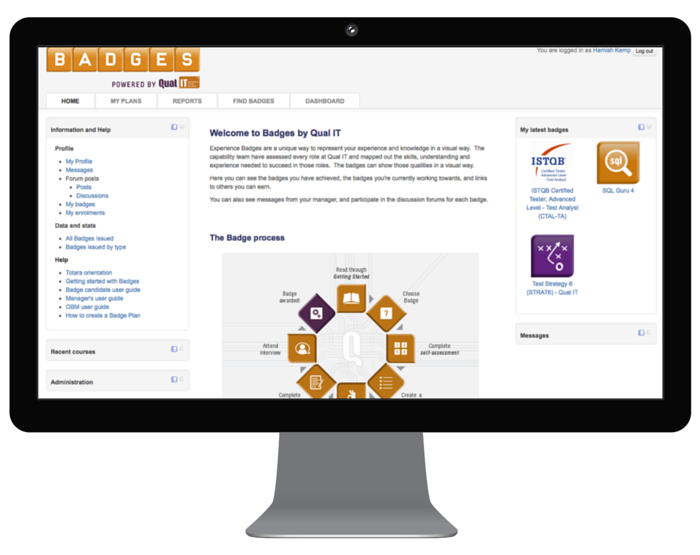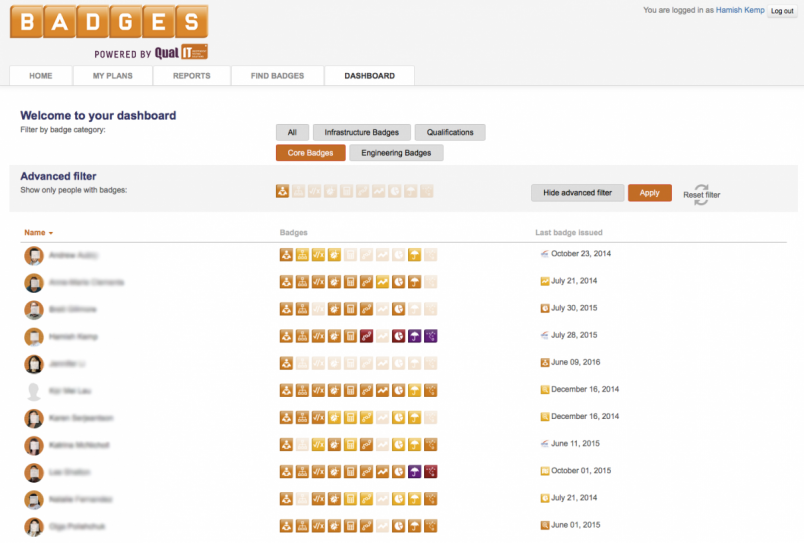Qual IT provides independent IT testing and assurance services to some of New Zealand’s most successful organisations. They place an emphasis on building a renowned culture and being the place of choice for test and assurance professionals to work.
The Challenge
Qual IT’s business owners wanted to recognise and catalogue the range of skills and capabilities needed by their employees in the specialist area of software testing. Following some rigorous research, they decided to pursue something similar to the Scouts’ badge system. They identified 12 core capabilities and around 30 ancillary capabilities which software testers need to demonstrate in their daily tasks, at basic, advanced and higher levels.Initially they created their own in-house set of online pages using existing systems to display these badges; however the processes behind it were very manual. Qual IT also needed a way for different people in the business to assess the different capabilities, not just the team member’s manager, because sometimes they were specialist skills performed by subject matter experts. They determined that an LMS would be the ideal solution for this. 
The Solutio
Qual IT discovered that the learning management system Totara Lear could offer the business the ability to support their badge approach and introduce more automation to their processes. They chose to partner with Catalyst to deliver this solution.Qual IT Badges are course based, with an application for each Badge being started by learners, or ‘badge candidates’, creating a Badge (learning) plan. Following a self-assessment exercise using a third-party tool, badge candidates receive a recommendation about the badge level that matches their skill level. Candidates and their managers then work on their Badge plan which, when approved by the manager, results in them being enrolled in the Badge course.Using a combination of Appraisals and Courses, candidate’s work with their manager’s to create a portfolio of evidence showing how they have applied the skills defined by the Badge. When the evidence has been gathered, a Badge assessor organises an interview using the course face-to-face activity.After the interview the assessor then checks that all the criteria have been met using a rubric-based assessment in the Badge course. The rubric includes a recommendation on whether or not the badge should be awarded. For quality assurance purposes, the ‘Badge Manager’ checks that the process has been followed according to company standards. When satisfied, the Badge Manager completes a course based rubric which triggers the award of the Badge.While this is not currently a formally required professional development framework, team members are encouraged to achieve badges, especially when they have downtime between testing projects. 
The Results
The take up for the badge programme has been fantastic, with over 460 badges issued since the initiative started in 2013.This consistent approach to recognising skills across the business has been highly beneficial to Qual IT, as well as improving the business inventory of the current skillsets within the organisation.There is future potential to use the data being collected to manage talent and placement of that talent for client projects, ensuring the skills within the organisation are applied in the most appropriate places. There are also wider opportunities to develop more badges for new roles as the business develops, with the associated ‘job development’ opportunities that present themselves to employees.




